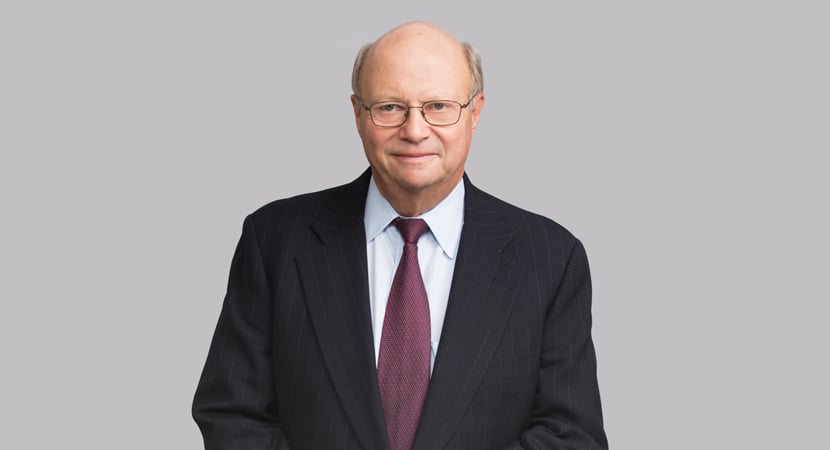Second Circuit affirms district court’s denial of plaintiffs’ request for preliminary injunction prohibiting defendant, Aereo, from transmitting plaintiffs’ copyrighted television programs to Aereo’s subscribers while those programs are still airing on broadcast television, finding that transmissions at issue are not “public performances” under the Copyright Act.
Plaintiffs American Broadcasting Companies, Inc., and other corporate producers, marketers, and distributors of broadcast television brought two separate lawsuits against Aereo, Inc., alleging that its service unlawfully captured broadcast television signals in the New York City area (including those corresponding to television programs in which plaintiffs hold the copyrights) and provided them over the Internet to Aereo subscribers, directly and contributorily infringing on plaintiffs’ rights under the Copyright Act. Plaintiffs moved for preliminary injunction, asserting that Aereo was directly liable for infringement of plaintiffs’ public performance rights in their copyrighted works because of the aspects of Aereo’s service that allow subscribers to view plaintiffs’ copyrighted television programs nearly contemporaneously with the over-the-air broadcast of these programs, and sought to bar Aereo from continuing to engage in those services. The district court denied plaintiffs’ motion, holding that it was bound by the Second Circuit’s 2008 Cartoon Network LP, LLP v. CSC Holdings (Cablevision) decision to conclude that Aereo’s transmissions did not constitute performances to the public under the Copyright Act and therefore plaintiffs would be unlikely to succeed on the merits of its public performance copyright claims. (Read our summary of the district court’s decision here). The Second Circuit affirmed, finding that under the analysis established by Cablevision, transmissions from Aereo’s service were not performances to the public under the Copyright Act and did not infringe on plaintiffs’ public performance rights.
As did the district court, at the outset the Second Circuit engaged in a detailed description of Aereo’s services, from both the subscribers’ and Aereo’s perspectives. According to the court, from the subscribers’ perspectives, Aereo provides the functionality of three devices – a TV antenna, a DVR, and a Slingbox (a device that enables subscribers to view programs on mobile devices) – allowing subscribers, through their Aereo accounts, to use their Internet-connected computers or other devices to either watch television programs live (contemporaneously, but with both a small delay and the ability to pause, rewind, and review the programs) using Aereo’s Watch function, or to choose to record current or future programs for later viewing, using the Record function. From Aereo’s perspective, the court noted that the service uses thousands of individual antennas to capture broadcast signals and a remote hard drive to create individual copies of the programs. When an Aereo user selects a program from the site’s list of programs, the service assigns an individual antenna to receive that user’s requested program. The antenna receives the signal, decodes it, and sends the data to a server, where a copy of the program is saved in a directory reserved for that individual user. Whether the user chooses the Watch or Record function, the service makes a copy of the requested program. The only difference in the functions, according to the court, is that when the user chooses Watch, the service begins to stream the program to the user’s device after six or seven seconds of the program are saved to the server; whereas if the user chooses Record, the service saves a complete copy of the program to the server for the user’s later access. As the court noted, when a user watches a program using the Watch feature, the user is not watching the feed directly from the assigned antenna, but rather from an individual copy of the program on the Aereo server. The court also specifically noted that no two users share the same antenna at the same time, even if they are watching or recording the same program, and that the Aereo service uses the signal received by each antenna to create an individual copy of the program in the user’s personal directory. Even when two users are watching or recording the same program, Aereo creates a separate copy for each, and each user, whether watching the show nearly live or previously recorded, sees that individual copy on the TV, computer, or mobile device screen. No other Aereo user can ever view that particular copy.
According to the Second Circuit, plaintiffs’ appeal turned on whether Aereo’s service infringes plaintiffs’ exclusive public performance rights under the Copyright Act and, in particular, whether Aereo’s service constitutes a transmission of plaintiffs’ copyrighted programming under the Transmit Clause. Plaintiffs argued that Aereo’s transmissions of broadcast television programs at the same time they air on the broadcast stations fall within the plain language of the Transmit Clause and are analogous to the retransmissions of network programming made by cable systems, which are public performances under the 1976 Copyright Act. Because it rebroadcasts plaintiffs’ copyrighted shows without a license, Aereo infringes on plaintiffs’ exclusive right of public performance and violates the act. After reviewing the legislative history of the Transmit Clause, which the court acknowledged the drafters added to the Copyright Act in 1976 specifically to address the issue of the rebroadcast of network television programming by cable television systems, the court turned to its prior decision in Cablevision, in which the court “closely analyzed and construed the Transmit Clause in a similar factual context.”
In Cablevision, the Second Circuit, examining and interpreting the Transmit Clause, found that, in determining whether a transmission is to the public, the court must determine who is capable of receiving not the actual performance of the underlying work being transmitted but rather the transmission at issue, because the transmission is also a performance under the Transmit Clause. The Cablevision court concluded that the Transmit Clause directs the court to examine who is capable of receiving a particular transmission of a performance and that whether a transmission originates from an individual or a shared copy bears on that analysis, because the use of a unique copy may limit the potential audience of a transmission and therefore affects whether that transmission is made to the public. Applying that interpretation of the Transmit Clause to the facts of the case before it, the Cablevision court found that because defendant’s RS-DVR transmitted a unique copy of a recorded program to the individual subscriber who requested it, and because only that Cablevision customer, and no other subscriber, could receive a transmission generated from that particular copy, the universe of people capable of receiving an RS-DVR transmission is the single subscriber whose self-made copy is used to create that transmission. This transmission, concluded the Cablevision court, did not constitute a public performance within the meaning of the Transmit Clause and did not infringe on plaintiffs’ rights under the Copyright Act.
According to the Second Circuit, the Cablevision decision established four “guideposts” to determine plaintiffs’ appeal of the district court’s denial of the preliminary injunction. First and, according to the court, most important, the Transmit Clause directs courts to determine the potential audience of the individual transmission. If that transmission can be received by the public, the transmission constitutes a public performance, but if the potential audience of the transmission is only one subscriber, the transmission is not a public performance, with limited exceptions. Second, for the purposes of the Transmit Clause analysis, private transmissions are not aggregated, and whether the public is capable of receiving the same underlying work or original performance of the work by means of many transmissions is irrelevant. Third, an exception to this no-aggregation rule exists when private transmissions are generated from the same copy of the work. These private transmissions should be aggregated, and if these aggregated transmissions from a single copy enable the public to view that copy, the transmissions are public performances. And fourth, any factor that limits the potential audience of a transmission is relevant to the analysis.
According to the court, the Cablevision court’s decision that transmissions of programs using defendant’s RS-DVRs did not constitute public performances rested on two essential factors – that the system created unique copies of the programs that a subscriber requested to record and that only that subscriber could receive the transmission from that copy – and these two factors were also present in Aereo’s case. When an Aereo customer chooses to watch or record a program using either the Watch or Record functions, Aereo’s system creates a unique copy of that program and stores it in a directory on a hard drive assigned only to that user. When an Aereo user chooses to watch the program – whether live or long after the program has aired – the transmission sent by Aereo and received by that user is generated from that unique copy, and no other Aereo user can ever receive a transmission from that copy. Thus, the court concluded, “as in Cablevision, the potential audience of each Aereo transmission is the single user who requested that a program be recorded.”
The Second Circuit rejected plaintiffs’ argument that Cablevision is distinguishable because while Cablevision’s RS-DVR copies “broke the continuous chain of retransmission to the public” by serving as the source of the transmission of a program after the original broadcast had ended, Aereo’s “buffer” copies do not, because they are merely the device by which Aereo enables its subscribers to watch nearly live TV. The court disagreed for two reasons. First, Aereo’s copies have the same legal significance as the copies in Cablevision because the user exercises the same control over their playback – pausing and rewinding – and therefore creating a transmission that is no longer contemporaneous with the live broadcast. In addition, because the user can exercise this control after the copies are created, these copies cannot be regarded as simply one link in a chain of transmission. Second, the court found that plaintiffs’ argument failed to account for Aereo’s user-specific antenna, which collects the signal to create only the copy requested by a specific user, not multiple copies if multiple users request the same show. “Thus even if we were to disregard Aereo’s copies, it would still be true that the potential audience of each of Aereo’s transmissions was the single user to whom each antenna was assigned.” The court analogized the Aereo antenna to an individual’s rooftop antenna, which is undoubtedly private, because only that individual can receive the transmission from that antenna, and concluded: “Plaintiffs have presented no reason why the result should be any different when that rooftop antenna is rented from Aereo and its signals transmitted over the Internet: it remains the case that only one person can receive that antenna’s transmissions.”
Turning to the other factors bearing on the preliminary injunction analysis, the appellate court found no abuse of discretion in the district court’s determination that the balance of hardships does not tip decidedly in plaintiffs’ favor, because while plaintiffs were likely to suffer irreparable harm in the absence of an injunction, Aereo would suffer significant hardship – likely the end of its business – if the court issued an injunction. The Second Circuit rejected plaintiffs’ argument that the court should disregard the hardship to Aereo because its actions were illegal, finding that the argument hinged on the conclusion that Aereo’s business infringes plaintiffs’ copyrights. Because the Second Circuit had concluded otherwise, at least on the limited question before it, the court concluded that the harms Aereo would suffer from an injunction are legally cognizable and significant.
Judge Chin wrote a lengthy dissent, in which he described Aereo’s technology as a “sham,” and stated: “I conclude that Aereo’s transmission of live public broadcasts over the Internet to paying subscribers are unlicensed transmissions ‘to the public.’ Hence, these unlicensed transmissions should be enjoined.”
-
 Partner
Partner -
 Partner
Partner -
 Co-Chair, Litigation
Co-Chair, Litigation -
 Chair, Intellectual Property Protection; Chair, Luxury Brands; Deputy Chair, Advanced Media and Technology
Chair, Intellectual Property Protection; Chair, Luxury Brands; Deputy Chair, Advanced Media and Technology -
 Partner
Partner -

-
 Legal Publications Editor
Legal Publications Editor
)

